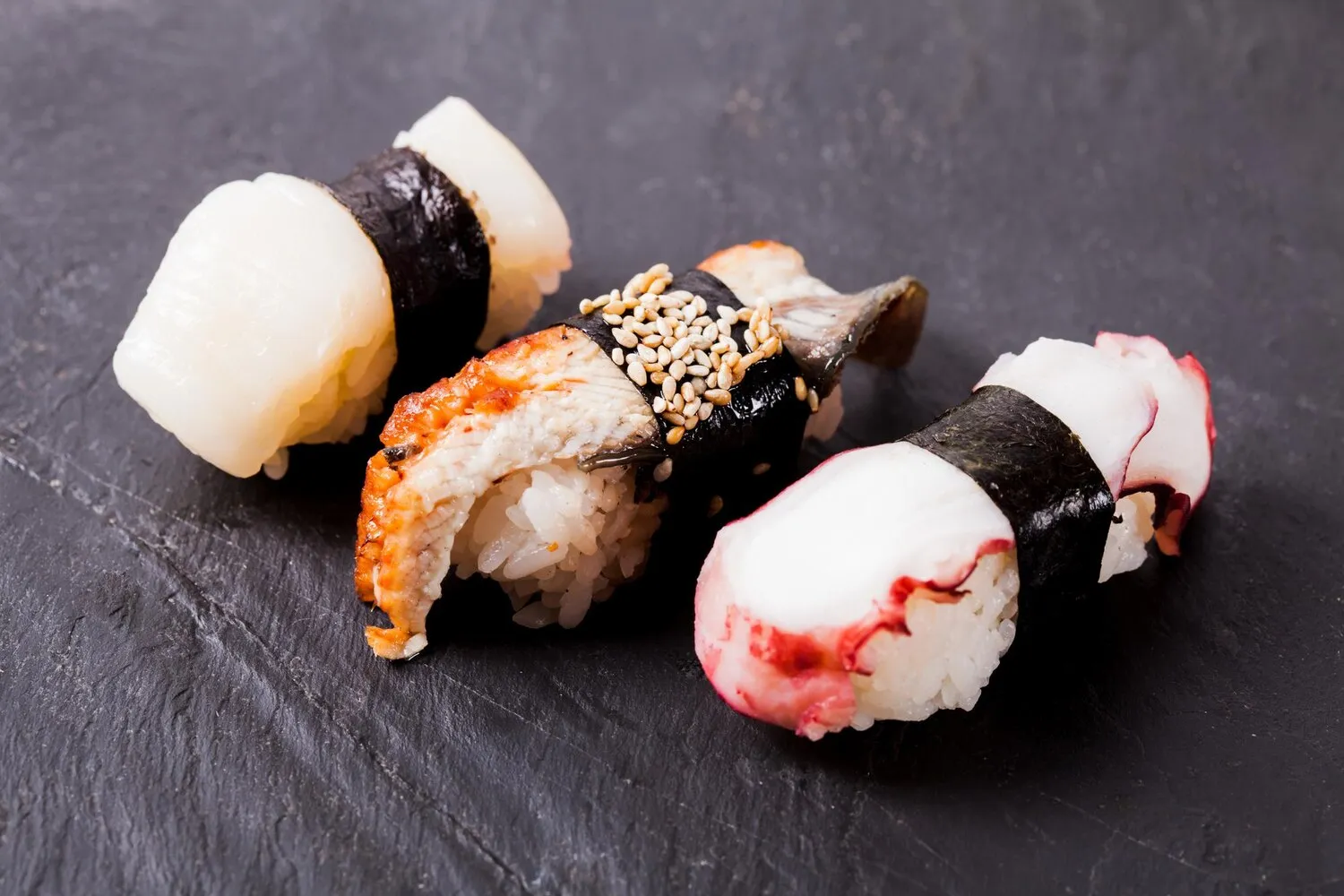
Nigiri
Nigiri is another classic Japanese dish consisting of a slice of raw fish over vinegared rice. It's a staple offering at most sushi restaurants like Insushi.
Nutrition Facts
* The % Daily Value (DV) tells you how much a nutrient in a serving of food contributes to a daily diet. 2,000 calories a day is used for general nutrition advice.
Nigiri sushi's origins can be traced back to the Edo period (1603-1868) in Japan, when food preservation techniques were limited. Originally, fish was fermented with rice to extend its shelf life. Over time, this process evolved into the quicker, more palatable preparation of fresh fish served atop vinegared rice that we know as nigiri today.
Nigiri is deeply ingrained in Japanese culinary culture and etiquette. It represents a respect for the ingredients, particularly the freshness and quality of the fish, and the craftsmanship of the sushi chef.
Sushi Etiquette
There are specific ways to eat nigiri in Japan. It's best to dip the fish side into the soy sauce rather than the rice, to avoid making the rice too soggy. It's also considered polite to eat nigiri in one or two bites.
Omakase
Many sushi restaurants offer an 'omakase' experience, where the chef selects the nigiri and other dishes based on the freshest seasonal ingredients. This demonstrates trust in the chef's expertise.
Seasonal Fish
The type of fish used in nigiri often varies depending on the season, with certain species being considered more flavorful and desirable at different times of the year.
The flavor profile of nigiri is a delicate balance of umami, sweetness, and acidity. The fresh, clean taste of the fish is complemented by the slightly sour and subtly sweet vinegared rice.
The main flavor components include the clean, oceanic taste of raw fish (such as tuna, salmon, or yellowtail), the vinegared rice (shari), which provides a slightly sweet and tangy base, and optional additions like wasabi for a spicy kick, or soy sauce for added umami and saltiness. The flavor varies greatly depending on the type of fish used. Some fish, like tuna, have a rich, buttery flavor, while others, like snapper, are more delicate and mild.
Rice Temperature
The rice should be slightly warm (around body temperature) when forming the nigiri. This helps the rice bind together and enhances the overall texture.
Fish Quality
The freshness and quality of the fish are paramount. Look for fish that is vibrant in color, firm to the touch, and has a clean, fresh smell.
Wasabi Usage
Use wasabi sparingly. A small dab under the fish can enhance the flavor without overpowering the delicate taste of the fish.
Soy Sauce
High-quality soy sauce is crucial. Look for naturally brewed soy sauce with a rich, complex flavor. Avoid overly salty or artificial-tasting soy sauces.
Explore additional Nigiri dishes and restaurants
Explore NigiriDiscover top dining spots and culinary experiences in Bolzano.
Explore BolzanoLearn more about the food culture, restaurant scene, and culinary heritage of Italy.
Explore Italy